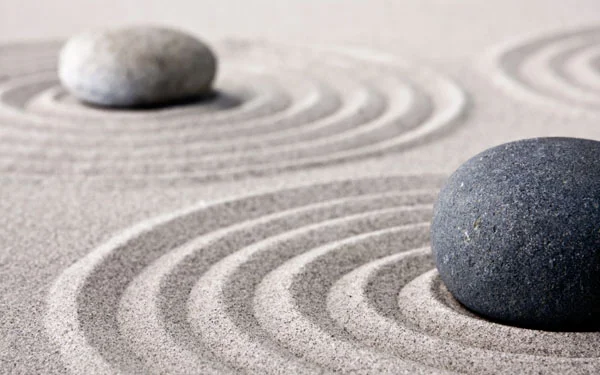“Mindfulness practice means that we commit fully in each moment to be present; inviting ourselves to interface with this moment in full awareness, with the intention to embody as best we can an orientation of calmness, mindfulness, and equanimity right here and right now.”
- Jon Kabat-Zinn, Wherever You Go, There You Are.
Jon Kabat-Zinn is a Professor of Medicine Emeritus and founding director of the Stress Reduction Clinic and the Center for Mindfulness in Medicine, Health Care, and Society at the University of Massachusetts Medical School. In response to the ever-growing demand for effective ways to cope with stress, Kabat-Zinn developed the Mindfulness-Based Stress Reduction (MBSR) approach.
According to Buddhist psychology, mindfulness has the unique quality of strengthening all wholesome or healthy states of mind (those that lead to happiness, such as generosity, kindness and clarity) and weakening all unwholesome states (those that lead to unhappiness, such as anger, greed and confusion). Second, mindfulness can be used to amplify states of well-being. Wholesome states bring about a gladness of heart. Bringing mindful attention directly to this feeling increases the gladness. (Source: Right Mind Programs)
Researchers Zayda Vallejo and Hortensia Amaro summarize the four main formal experiential practices of the MBSR program:
1. The Body Scan
The body scan consists of a systematic mental scanning of the different parts of the body, mentally exploring inner and outer sensations with curiosity and without judgment. This technique is effective for developing concentration, flexibility of attention, and for training the mind to come back to the here-and-now through moment-to-moment awareness.
2. Seated Meditation
Participants are invited to consciously adopt an alert, dignified, and relaxed posture, and to bring the mind to the present moment by selecting an object of focus such as the breath, bodily sensations, sounds, emotions, or thoughts. Once participants are able to sustain their attention on the object for longer periods, they are invited to open their field of awareness to witness anything that arises inwardly. People start to notice that they can witness their own thoughts objectively without having to act on them. Transformation and change occur by learning to anchor awareness in the present moment and to live in a curious interested way, instead of the usual “I like” or “I don’t like” mode.
3. Mindful Hatha Yoga
Yoga means union of body and mind. The exercises are performed in a slow and mindful manner, keeping focus on the parts of the body that are engaged in a particular exercise, and allowing the muscles that are not engaged to rest and relax. The aim of the exercise is to notice the changing sensations, not necessarily to do the exercise perfectly. Awareness of attempts to anesthetize feelings of anxiety and distress by overeating, overworking, drinking, and/or using drugs also increases. Transformation and change occur by learning to be aware of bodily experiences and sensations and to see more clearly the extra “layer” added by feelings and thoughts of likes and dislikes.
4. Walking Meditation
This practice consists of focusing one’s attention on the actual experience of walking. Generally, the person starts very slowly, focusing attention on sensations of the feet, the legs, and finally the entire body. This can be combined with awareness of breathing. Attention is given to the intrusion of any thoughts or emotions and returning attention to the bare sensations of movement. Transformation and change occur by using walking as a connection or bridge between periods of practice and daily life.
If you’re interested in learning more about or participating in a MBSR program, please visit the Center for Mindfulness in Medicine, Health Care and Society.

